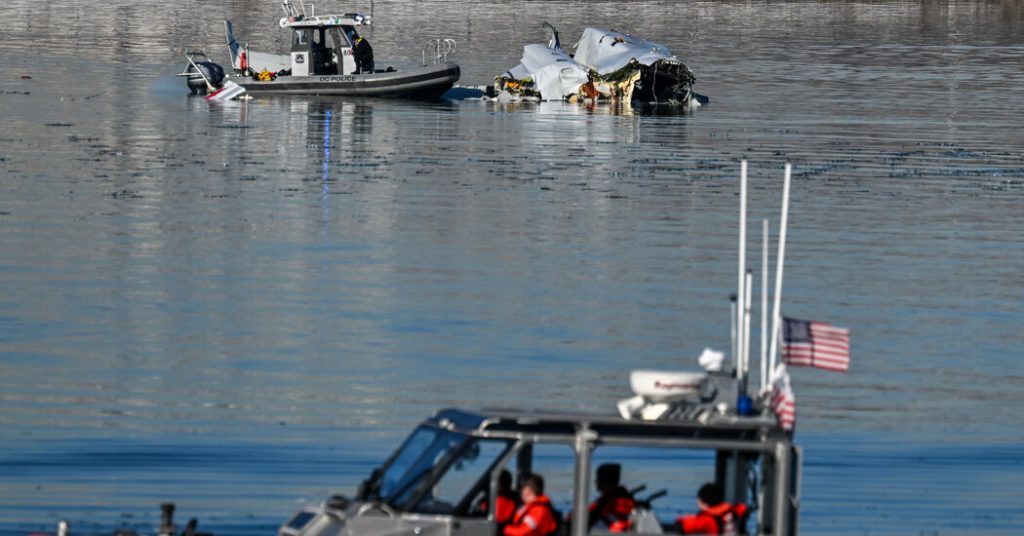The midair collision between American Airlines Flight 5342 and a US Army Black Hawk helicopter over the Potomac River on Wednesday, October 26, 2006, claimed the lives of all aboard both aircraft, marking the deadliest aviation accident in the United States in nearly 25 years. The National Transportation Safety Board (NTSB) launched an immediate investigation to unravel the sequence of events that led to this tragedy, focusing on the actions of both flight crews and the air traffic controller, as well as the accuracy of the radar data available.
Preliminary findings from the flight data recorders revealed that the collision occurred between 300 and 350 feet above the ground. Crucially, this altitude placed the Black Hawk helicopter over 100 feet above its authorized altitude of 200 feet for Route 4, the designated flight path it was following near Reagan National Airport. Helicopters operating in this airspace are required to adhere to strict altitude and route restrictions to prevent conflicts with commercial air traffic. The helicopter’s unauthorized altitude positioned it directly in the path of the descending regional jet.
Adding to the complexity of the situation, the radar scope used by the air traffic controller on duty displayed the helicopter at an altitude of approximately 200 feet, consistent with its authorized limit, at the moment of impact. Investigators underscored the preliminary nature of this radar information and emphasized the need for further verification. The discrepancy between the actual altitude derived from the flight data recorder and the radar-indicated altitude is a key focus of the investigation. Understanding why the controller may have received inaccurate altitude information is critical to determining the factors contributing to the collision.
The NTSB meticulously reconstructed the air traffic communications leading up to the collision. A single controller was managing communications with both the American Airlines flight and the Black Hawk helicopter, a situation resulting from the early departure of another controller from the shift. At approximately 8:15 p.m., Flight 5342 initiated its descent from 37,000 feet. Twenty-five minutes later, air traffic control cleared the flight for landing.
At approximately 8:43 p.m., the controller requested the flight crew to switch their landing runway from Runway 1 to Runway 33. This change, agreed upon after a brief discussion between the controller and the pilots, involved landing on a shorter runway, requiring heightened pilot concentration during the final approach. Two minutes later, the aircraft’s autopilot was disengaged, transitioning to manual control.
The sequence of events accelerated at 8:46 p.m. The air traffic controller informed the helicopter crew of the approaching passenger jet circling for landing on Runway 33 and cleared another aircraft for takeoff on Runway 1. Just one minute later, with Flight 5342 at approximately 500 feet above ground level, the controller confirmed with the helicopter pilots whether they had the commercial jet in sight and instructed them to pass behind it. Seconds later, an automated traffic advisory sounded in the cockpit of the regional jet. At 8:47:58 p.m., the flight data recorder captured a slight increase in the aircraft’s pitch, coinciding with the crew uttering something unintelligible. Immediately following this, the impact was heard by the air traffic controller.
The NTSB’s investigation focuses on several critical areas: the reason for the Black Hawk helicopter’s deviation from its authorized altitude; the potential discrepancy between the helicopter’s actual altitude and the altitude information displayed on the air traffic controller’s radar scope; the communications between the air traffic controller and both aircraft; and any contributing factors related to the runway change for Flight 5342. The slight upward pitch maneuver executed by the regional jet just before impact suggests a possible last-minute attempt to avoid the collision, but it proved insufficient to prevent the tragedy. The NTSB’s comprehensive investigation aims to determine the probable cause of this accident and provide recommendations to prevent similar incidents in the future.
The loss of life in this midair collision underscores the critical importance of maintaining safe separation between aircraft operating in congested airspace. The NTSB’s detailed analysis of the flight data, radar information, and air traffic control communications will be crucial in understanding the chain of events that led to this devastating accident. The investigation seeks to answer why the helicopter was flying at an unauthorized altitude, why the radar data might have been inaccurate, and whether the actions of the air traffic controller and flight crews contributed to the collision.
The investigation also considers the potential impact of the runway change for Flight 5342. While the reason for the change remains unclear, the shorter landing distance of Runway 33 may have placed increased demands on the pilots during the final approach. The NTSB will investigate whether this factor played any role in the sequence of events leading to the collision.
The cockpit voice recorder data will be carefully analyzed to understand the context of the crew’s utterances just before impact. Determining the nature of these communications could provide valuable insights into the pilots’ awareness of the impending collision.
Ultimately, the NTSB’s investigation seeks to identify the systemic weaknesses that contributed to this tragedy. By understanding the factors that led to the collision, the board can formulate recommendations to enhance air traffic control procedures, improve pilot training, and implement technology upgrades to prevent similar accidents from occurring in the future. The goal is to ensure the safety of air travel and prevent such devastating losses of life.
The investigation also highlights the challenges of managing complex airspace around major airports. The intricate choreography of aircraft arrivals and departures requires constant vigilance from air traffic controllers and strict adherence to procedures by pilots. The density of air traffic in these environments increases the potential for conflicts, emphasizing the need for robust safety systems.
TheNTSB’s investigation will meticulously examine the human factors involved in the accident. This includes assessing the workload and decision-making of the air traffic controller and the performance of the flight crews. Determining whether fatigue, stress, or other human factors contributed to the collision will be crucial in developing effective preventive measures.
The use of technology in air traffic control is also under scrutiny. The potential discrepancy between the radar data and the helicopter’s actual altitude raises questions about the reliability of the information available to controllers. The NTSB’s investigation will explore whether technological limitations or malfunctions contributed to the accident.
The final report, based on the NTSB’s comprehensive analysis, will provide a detailed account of the probable cause of the collision and recommendations to improve aviation safety. This tragedy underscores the continued need for vigilance, rigorous investigation, and a commitment to enhancing safety protocols in the complex world of air travel.










